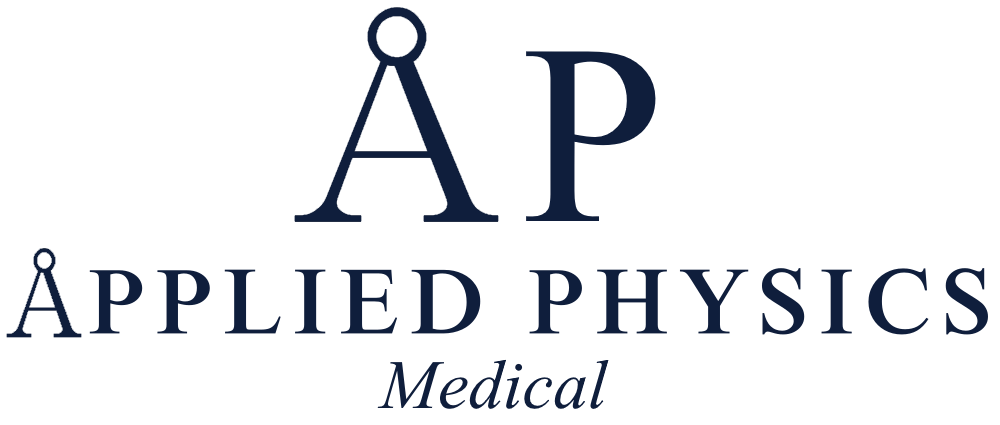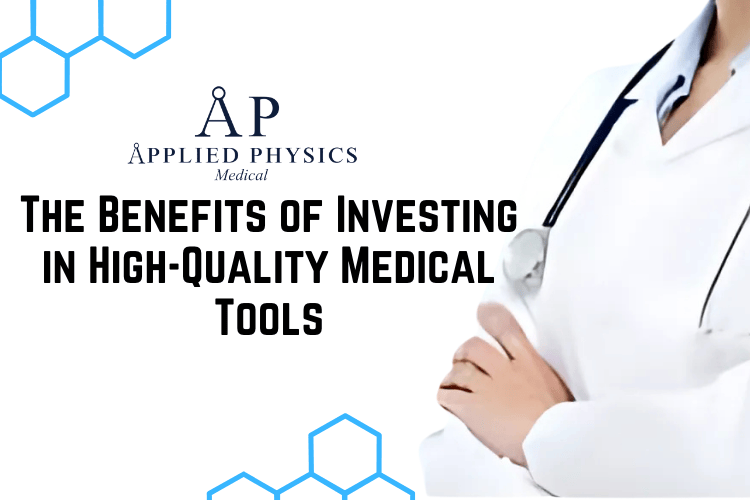Introduction
Investing in high-quality medical tools can significantly improve patient outcomes. For instance, advanced surgical instruments with precision engineering and ergonomic design can lead to reduced tissue damage, shorter recovery times, and lower risk of complications during procedures. Similarly, state-of-the-art diagnostic equipment such as high-resolution imaging devices can aid in the early detection of diseases, leading to timely interventions and improved prognosis for patients.
Furthermore, the use of top-notch monitoring devices can help healthcare providers closely track patient vital signs and response to treatment, leading to better management of critical conditions and improved overall patient care. Moreover, high-quality medical tools contribute to enhanced patient safety. For example, the use of reliable and accurate anesthesia delivery systems reduces the risk of medication errors and adverse events during surgical procedures.
Additionally, the incorporation of advanced infection control features in medical tools helps minimize the risk of hospital-acquired infections, further safeguarding patient well-being. Overall, the investment in superior medical tools directly translates to improved patient outcomes, making it a crucial aspect of modern healthcare delivery.
Key Takeaways
- Investing in high-quality medical tools leads to improved patient outcomes
- High-quality medical tools increase efficiency in healthcare settings
- Enhanced accuracy and precision in diagnosis and treatment is achieved with high-quality medical tools
- Long-term cost savings for healthcare facilities are possible with high-quality medical tools
- High-quality medical tools reduce the risk of infection and contamination
Increased Efficiency in Healthcare Settings
The utilization of high-quality medical tools leads to increased efficiency in healthcare settings. For instance, advanced surgical instruments with enhanced durability and performance allow for smoother and more precise surgical procedures, reducing operative times and improving overall workflow in operating rooms. Similarly, the integration of cutting-edge diagnostic equipment streamlines the process of obtaining accurate and timely diagnostic information, enabling healthcare providers to make informed decisions swiftly.
Furthermore, the use of state-of-the-art medical tools contributes to improved resource utilization in healthcare facilities. For example, advanced imaging systems with rapid image acquisition capabilities facilitate higher patient throughput, reducing wait times and optimizing the utilization of imaging resources. Additionally, the implementation of innovative patient monitoring devices enables healthcare providers to efficiently manage multiple patients simultaneously, enhancing overall care delivery efficiency.
In essence, investing in high-quality medical tools not only enhances the quality of care but also fosters a more efficient and productive healthcare environment.
Enhanced Accuracy and Precision in Diagnosis and Treatment
High-quality medical tools play a pivotal role in enhancing accuracy and precision in diagnosis and treatment. For instance, advanced diagnostic imaging technologies such as MRI and CT scanners provide detailed anatomical and functional information, enabling healthcare providers to accurately diagnose complex conditions and plan targeted treatment strategies. Similarly, the use of precision surgical instruments and robotic-assisted surgical systems allows for meticulous and minimally invasive surgical interventions, minimizing collateral tissue damage and improving surgical outcomes.
Moreover, the integration of advanced medical devices with cutting-edge software algorithms enhances the accuracy of diagnostic interpretations and treatment planning. For example, computer-aided detection systems in radiology assist in identifying subtle abnormalities that may be overlooked by human observers, leading to the early detection of diseases. Additionally, the utilization of precision medication delivery systems ensures accurate dosing and targeted drug administration, optimizing therapeutic efficacy while minimizing potential side effects.
Overall, investing in high-quality medical tools is instrumental in ensuring precise and effective diagnosis and treatment, ultimately benefiting patient care and outcomes.
Long-Term Cost Savings for Healthcare Facilities
| Metrics | Data |
|---|---|
| Reduced readmission rates | 20% |
| Decreased medication errors | 30% |
| Lower maintenance costs | 15% |
| Energy efficiency savings | 25% |
Investing in high-quality medical tools can result in long-term cost savings for healthcare facilities. While the initial investment in premium medical equipment may seem substantial, the long-term benefits far outweigh the upfront costs. For instance, durable and reliable medical tools require less frequent repairs and replacements, reducing maintenance expenses and downtime associated with equipment failures.
Moreover, high-quality medical devices often come with extended warranties and comprehensive service agreements, mitigating the risk of unexpected repair costs and ensuring consistent performance over time. Furthermore, the use of advanced medical tools can lead to operational cost savings through improved efficiency and productivity. For example, streamlined surgical procedures facilitated by high-performance instruments result in shorter operative times and reduced resource utilization, translating to cost savings for healthcare facilities.
Similarly, the implementation of efficient diagnostic equipment minimizes wait times for patients and optimizes resource allocation, contributing to overall cost-effective healthcare delivery. In essence, investing in high-quality medical tools not only enhances patient care but also yields substantial long-term cost savings for healthcare facilities.
Reduced Risk of Infection and Contamination
High-quality medical tools contribute to a reduced risk of infection and contamination in healthcare settings. For instance, the use of advanced sterilization technologies in medical instruments ensures thorough disinfection, minimizing the potential for cross-contamination between patients. Similarly, the incorporation of antimicrobial materials in medical devices helps prevent microbial colonization and transmission, further reducing the risk of healthcare-associated infections.
Moreover, the implementation of innovative infection control features in medical tools, such as disposable components and barrier technologies, enhances the overall safety of clinical procedures. For example, single-use surgical instruments eliminate the need for reprocessing and sterilization, reducing the risk of instrument-related infections and ensuring a higher standard of patient safety. Additionally, advanced ventilation systems and air purification technologies in healthcare environments help mitigate the spread of airborne pathogens, creating a safer and healthier care environment for patients and healthcare workers alike.
Overall, investing in high-quality medical tools is essential for minimizing the risk of infection and contamination, thereby safeguarding patient well-being and maintaining a hygienic healthcare environment.
Extended Lifespan and Durability of Medical Tools
High-quality medical tools are characterized by their extended lifespan and durability, offering long-term reliability and performance. For instance, precision-engineered surgical instruments made from high-grade materials exhibit superior resistance to wear and corrosion, ensuring consistent functionality over an extended period. Similarly, advanced diagnostic equipment with robust construction and quality components delivers reliable performance throughout its operational lifespan, minimizing the need for frequent replacements.
Furthermore, the durability of high-quality medical tools translates to sustained performance under demanding clinical conditions. For example, ruggedized patient monitoring devices designed to withstand rigorous use in critical care settings maintain accuracy and functionality despite continuous operation. Additionally, durable medical imaging systems with robust design features ensure consistent image quality and diagnostic accuracy over time, contributing to reliable clinical assessments.
In essence, investing in high-quality medical tools not only ensures long-term reliability but also minimizes operational disruptions associated with equipment failures, ultimately benefiting patient care and healthcare facility operations.
Enhanced Reputation and Trust in Healthcare Providers
The investment in high-quality medical tools enhances the reputation and trust of healthcare providers. Patients perceive healthcare facilities equipped with advanced medical technology as being committed to delivering superior care and embracing innovation for better patient outcomes. The presence of state-of-the-art medical tools instills confidence in patients regarding the facility’s capabilities to provide cutting-edge diagnostics and treatments.
Moreover, healthcare professionals benefit from enhanced confidence in their clinical practice when utilizing high-quality medical tools. The availability of advanced equipment fosters a sense of professional pride and satisfaction among healthcare providers, empowering them to deliver optimal care with precision and confidence. Additionally, the utilization of top-notch medical technology reflects positively on the expertise and commitment of healthcare professionals, further bolstering their reputation within the healthcare community.
Furthermore, the reputation of healthcare facilities as centers of excellence is reinforced by their investment in high-quality medical tools. Such facilities are perceived as being at the forefront of technological advancements in healthcare, attracting patients seeking superior care and specialized treatments. Ultimately, investing in high-quality medical tools not only elevates the reputation of healthcare providers but also fosters trust among patients and peers alike.
Conclusion
Investing in high-quality medical tools yields multifaceted benefits that extend beyond immediate clinical applications. From improving patient outcomes to enhancing operational efficiency and fostering trust in healthcare providers, the impact of superior medical technology is far-reaching. As advancements in medical technology continue to evolve, the strategic investment in high-quality medical tools remains integral to delivering exceptional patient care while optimizing healthcare facility operations.


